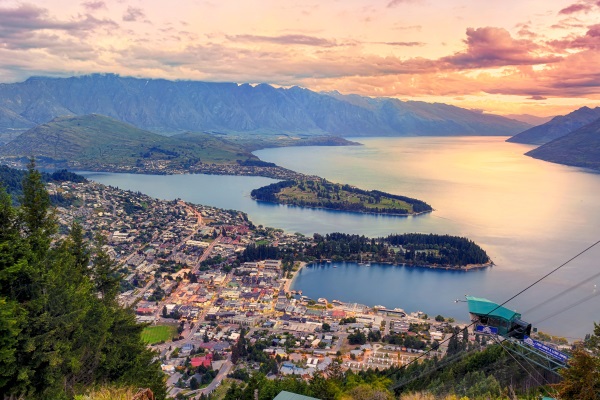While Queenstown may have gone from the rooster to the rockstar of New Zealand’s economy in the past year, according to headline data, Arrowtown-based regional economist Benje Patterson says it’s no bed of roses in the resort.
Speaking at a Queenstown Business Chamber of Commerce Westpac Smarts event last Tuesday, Patterson talked through his Queenstown-Lakes economic update for February.
In the December quarter, gross domestic product was up 8% per annum — the fastest growth of any territorial authority in New Zealand.
Nationally, both consumer and business confidence has dropped to levels last seen during the global financial crisis, and, in the December quarter, there was a 4% decline in the volume of retail spending across the country.
But in Queenstown, a net 28% of businesses surveyed by the Chamber in December expected an activity increase in the March, 2023, quarter.
Patterson says in the year to December, consumer spending was up 23.7% in the Queenstown-Lakes, tourism expenditure was up 36.2%, residential consents increased by 9.2% and commercial consents by 29.1%.
On average, there was about 9% wage growth in the local economy across the district, compared to about 10% in 2021, and the national average of 6.4%.
“It looks very different when you go industry-by-industry.
“Healthcare workers, teachers … council workers, they’re not getting much of an increase.
“Then you have the ones most severely affected by labour shortages – activity, accommodation, hospitality – a lot of those are in the 15% to 20% range.”
Additionally, the district’s now back to record employment.
While he accepts that doesn’t pass ‘‘the sniff test’’, through Covid, in spite of the hollowing out of the business sector, the district saw ‘‘pretty significant’’ growth in the population.
Over the past year alone there’s been about a 5% increase in enrolments with local GPs, which is a ‘‘really good proxy for population growth’’.
That’s led to rapid increases in employment in professional services, health, education, manufacturing, construction and retail, for example.
However, in the accommodation and hospitality sector, there are still 1200 fewer people employed than pre-Covid.
When the tourism rebound’s accounted for — he says, based on Queenstown Airport data, passenger numbers increased by 1% in January
compared to pre-Covid — it’s creating huge pressure for businesses.
When wage growth in those struggling industries is factored in, along with inflation – Patterson says some businesses he’s spoken to have talked about up to 40% increases in their costs since Covid hit – “it’s almost like we’ve reached this point where people have reached the limits of what they can do with their cheque book, and it’s becoming about non-wage factors more”.
Specifically on the accommodation and hospitality sectors, he says while it may not be necessary to fill all 1200 empty roles, ‘‘even if we get lean and mean, we’re still talking about a big, big gap’’.
‘‘That’s why there are pressures on our businesses.
‘‘They’re very real, and we need to look below these headline figures in conversations we’re having [with] external people to our region.’’




